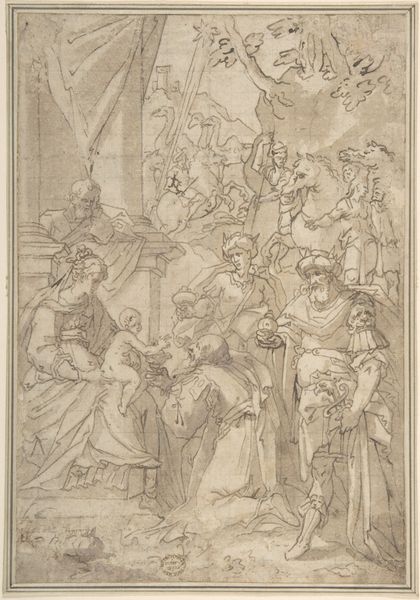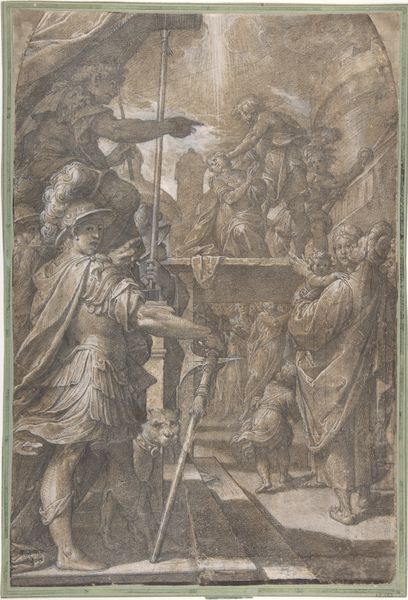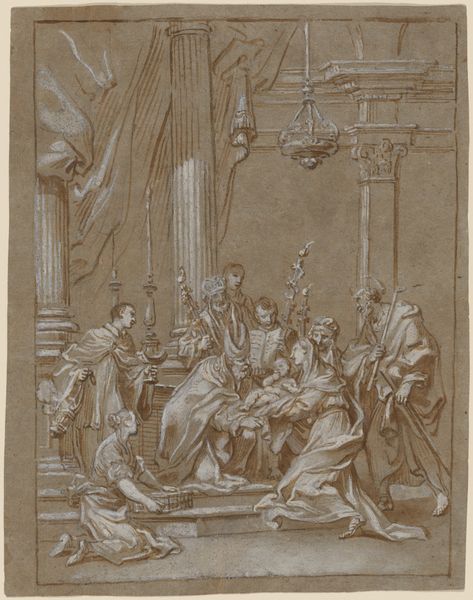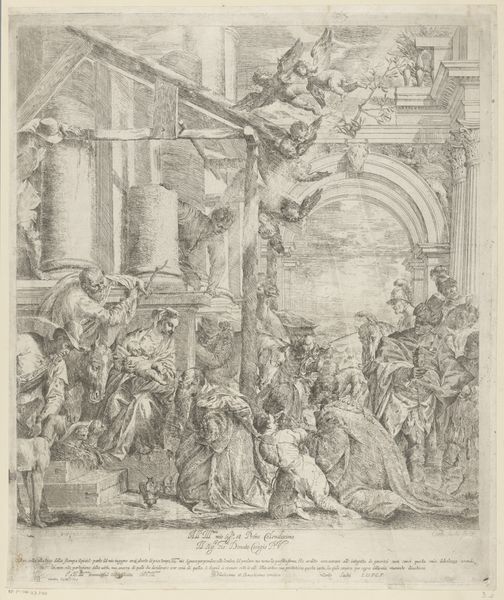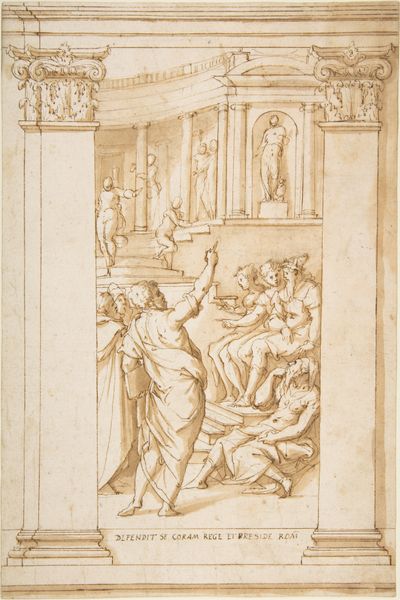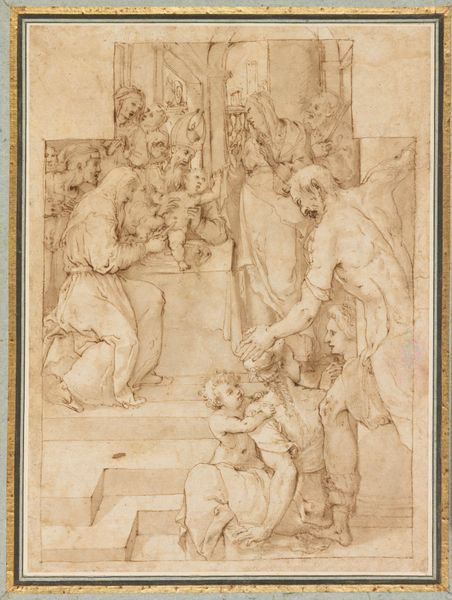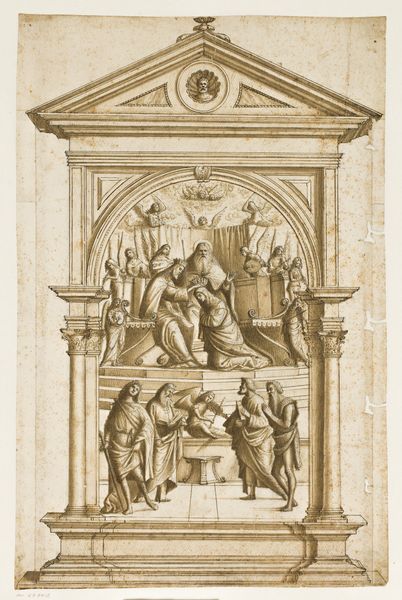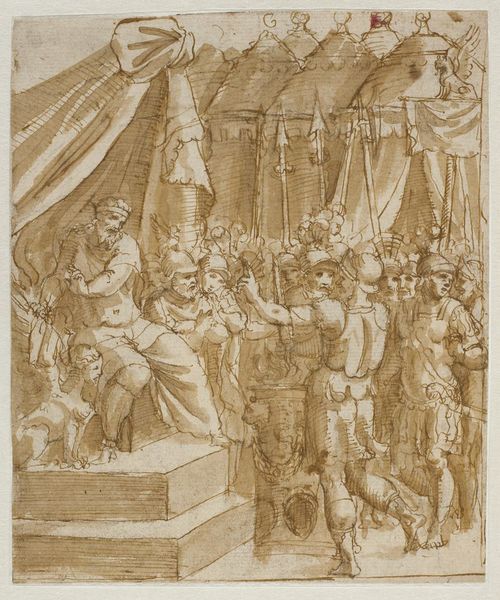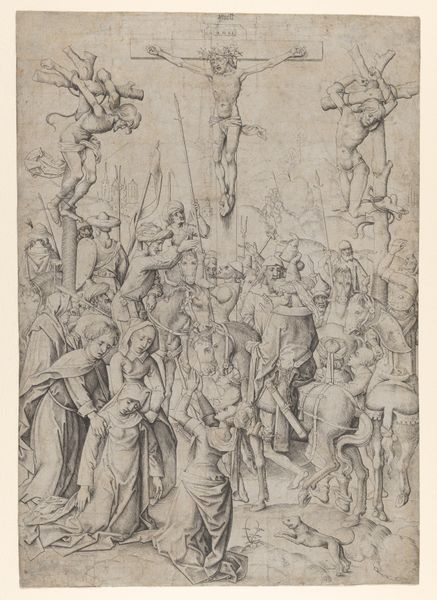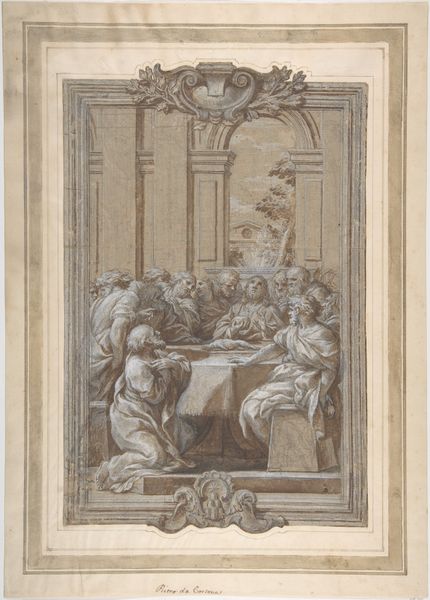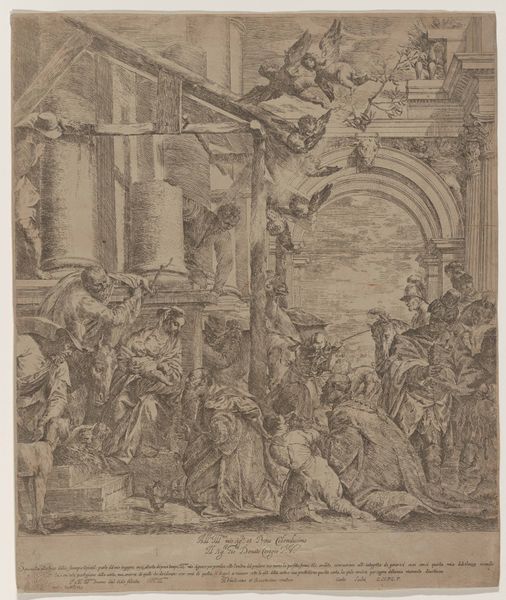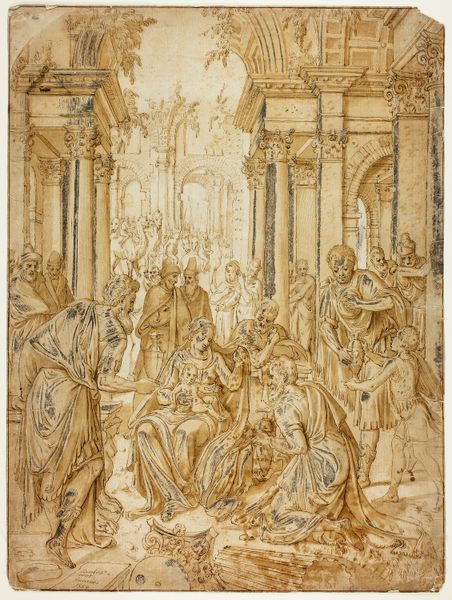
drawing, paper, ink, chalk, charcoal
#
drawing
#
narrative-art
#
figuration
#
paper
#
11_renaissance
#
charcoal art
#
ink
#
chalk
#
charcoal
#
history-painting
#
italian-renaissance
Dimensions: 297 × 164 mm
Copyright: Public Domain
Editor: Here we have Cesare Nebbia's "Saint Helena Kneeling before the True Cross," a drawing made around 1582 with charcoal, chalk, and ink on paper. It feels quite energetic, almost frenetic, with all these figures pulling the cross. What strikes you when you look at this piece? Curator: Well, immediately I consider the labor embedded within this drawing's creation. Think about the sourcing of the materials: the grinding of the charcoal, the mixing of the ink, the production of the paper itself. Each step involved human effort, a cost often overlooked when we discuss "artistic genius." How does knowing the drawing was made using humble, readily available materials affect your view? Editor: That's a good point. I guess I often think of Renaissance art as very polished and refined, so it's easy to forget the gritty, physical work that goes into even a preparatory sketch like this. Curator: Exactly. And consider the social context: Nebbia likely wasn’t laboring alone. Apprentices, assistants...Art production was a collaborative effort, a workshop model, much like any other craft. It challenges this divide we create between artists and artisans. Does this reading change how we consider "Saint Helena?" Editor: It does! I was focused on the narrative, but I see that it also embodies a specific mode of production, a system of labor and collaboration. Maybe it tells a story of Renaissance workshops as much as it illustrates the finding of the cross? Curator: Precisely! The object itself becomes evidence of those production processes. Now consider the patronage system at play in commissioning such works. Who pays matters just as much as who paints. Editor: I never really thought of a drawing having so many layers. I'll definitely look at the making of art differently from now on. Curator: Likewise. Exploring art through its materiality reveals previously unseen narratives of labor and social context, complicating assumptions around artistic expression.
Comments
No comments
Be the first to comment and join the conversation on the ultimate creative platform.
